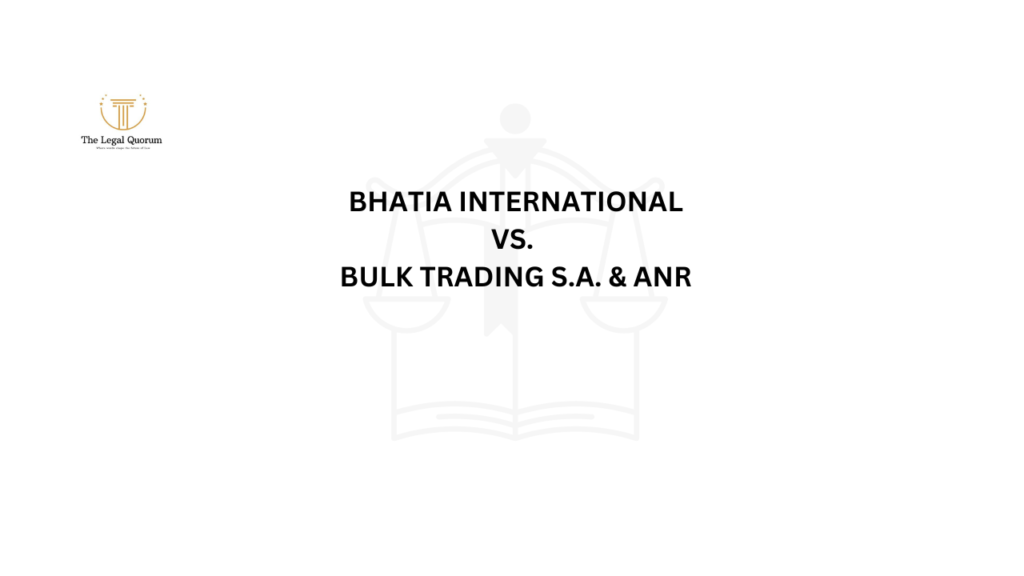Published On: Novemeber 9th 2025
Authored By: Nameera Iqbal
Sultan-ul-uloom College of law, affiliated to Osmania University
Abstract
Judicial accountability is often described as the cornerstone of judicial integrity, yet in India it remains one of the most debated constitutional questions. This article explores the Indian judiciary’s accountability mechanisms, their shortcomings, and the reforms urgently needed to strengthen public trust. It argues that accountability and independence are not conflicting values but mutually reinforcing ones, complementary not contradictory. The analysis draws from constitutional provisions, landmark judgments, expert opinions, comparative jurisdictions, and policy reports, and proposes reforms grounded in practical and ethical considerations that are aimed at embedding transparency without eroding independence.
Introduction
The Indian judiciary plays a unique role as the guardian of constitutional democracy and the protector of fundamental rights. It’s authority has expanded through doctrines like Judicial Review, Public interest Litigation and more. Yet, with such extensive powers comes an equally pressing need for accountability. As Justice J.S. Verma once observed, “independence without accountability is an illusion”.[1] The Framers of the Constitution sought to ensure independence through Articles 124-147 (Supreme Court) and Articles 214-231 (High Courts)[2], but accountability mechanisms were largely left to the rare and cumbersome procedure of impeachment. The present challenge is to balance two equally vital principles: ensuring that judges remain free from external interference while also being answerable for their conduct. This article explores this dilemma of constitutional safeguards, existing procedures such as impeachment and the in-house mechanism, evaluates their effectiveness, and comparative experiences. It also suggests reforms that can restore confidence in the judiciary while respecting its independence.
Constitutional and Statutory Framework
The Constitution of India guarantees judicial independence through structural protections. Security of tenure under Articles 124(2) and 217.[3] Fixed salaries charged on the Consolidated Fund of India (Articles 112–113).[4] Restrictions on post-retirement practice under Article 124(7).[5] For accountability, Article 124(4)[6] allows removal of a Supreme Court judge only for “proved misbehaviour or incapacity.” The Judges (Inquiry) Act 1968[7] details the procedure, requiring a motion supported by at least 100 Lok Sabha members or 50 Rajya Sabha members, followed by investigation and a two-thirds majority in both Houses.
This mechanism reflects the framers’ intent that removal should be possible only in the gravest cases. Yet, in over 70 years, no judge has ever been successfully impeached. Proceedings against Justice V. Ramaswami (1993)[8] and Justice Soumitra Sen (2011)[9] collapsed due to political divisions. The in-house procedure devised by the judiciary itself remains informal, secretive, and lacks statutory basis, making accountability under the current framework largely theoretical than real.
Judicial Precedents and Case Law
Judicial decisions have significantly shaped the narrative on accountability. In Kesavananda Bharati v State of Kerala (1973),[10] The Supreme Court affirmed that judicial independence forms part of the basic structure.
In C. Ravichandran Iyer v Justice A.M. Bhattacharjee (1995),[11] The Court endorsed the judiciary’s internal procedure for dealing with misconduct. The Assn v Union of India (NJAC case, 2016)[12] invalidated the National Judicial Appointments Commission Act to preserve judicial primacy, though critics argued this entrenched opacity. In Re: Arundhati Roy (2002)[13] The Court relied on contempt powers to protect its authority. More recently, Swapnil Tripathi v. Supreme Court of India (2018)[14] allowed live-streaming of proceedings in constitutional cases, signalling a step toward transparency.
These judgments reveal the judiciary’s strong commitment to independence,but a weaker approach to formal accountability.
Expert Perspectives
Prominent jurists and scholars have long questioned the adequacy of accountability mechanisms. Justice V.R. Krishna Iyer: “Accountability is the soul of Judicial Independence.”[15] Fali S. Nariman: Repeatedly criticised the collegium’s secrecy, warning it erodes credibility.[16] Justice Kurian Joseph (post-retirement): Advocated for transparency in appointments and warned of public distrust.[17] Arun Shourie: In Courts and Their Judgments, he argued that unchecked judicial power threatens democracy itself.[18] Law Commission Reports (230,[19] 272)[20]: Urged greater transparency in appointments and stronger mechanisms for complaints.
The consensus is clear: without credible accountability, independence risks degenerating into unaccountable power.
Comparative Jurisprudence
UK: The Judicial Conduct Investigations Office (JCIO) independently investigates complaints.[21]
US: The Judicial Councils Reform and Judicial Conduct Act 1980 empowers circuit councils to act on misconduct.[22]
Canada: The Canadian Judicial Council conducts transparent inquiries with public reports.[23]
Sweden, UK, New Zealand: All have well-established Judicial Ombudsman systems to handle grievances.[24]
By contrast, India’s reliance on impeachment and informal in-house procedures appears increasingly outdated and less credible.
Current Mechanisms: Gaps and Criticisms
Several gaps persist in the Indian model:
1.Impeachment – practically impossible given high political thresholds.
2.In-House Procedure – opaque, lacks statutory force, and leaves complainants dissatisfied.
3.Contempt Powers – sometimes used to suppress legitimate criticism.
4.Asset Disclosure – voluntary and inconsistent, undermining credibility.
These mechanisms are inadequate for ensuring accountability in a modern democracy.
Towards Reform: Policy Proposals
- To reconcile independence with transparency, reforms must be practical, ethical and rooted in facts:
- Judicial Ombudsman: a statutory independent body, independent from both judiciary and executive for complaints. Many countries (Sweden, UK, NZ) already have successful models.
- AI-driven Case Allocation: algorithm-based systems to avoid allegations of bias or “bench-fixing.”
- Transparent Collegium Records: mandatory disclosure of reasons for appointments. This would demystify the process and strengthen legitimacy.
- Performance Review Commission: An independent body to periodically assess judges’ efficiency and ethical conduct (not their judgments’ merits).
- Post-Retirement Cooling-Off Period: Prevent judges from accepting post-retirement appointments in government for at least three years to avoid conflicts of interest.
- Mandatory Asset Disclosure – Compulsory, audited disclosures by judges to build public confidence.
- Strengthening Contempt Law Safeguards – Limit contempt to genuine obstruction of justice, not criticism of judgments.
Such reforms demonstrate that accountability strengthens, rather than weakens, judicial independence.
Challenges in Implementing Policy Reforms
- Judicial Resistance – Judges may perceive reforms as encroachment on independence. Fix: Frame reforms as self-regulatory tools that enhance credibility, not restrict autonomy.
- Old habits and Opaqueness – Collegium secrecy and traditions make changes slow. Fix: Start with small transparency steps like publishing basic reasons.
- Technology & Resources – Digital tools need funding and readiness. Fix: Start with small pilot projects before full rollout.
- Public Trust Deficit – Citizens may doubt whether reforms are genuinely independent. Fix: Mandatory disclosure (assets, reasons for appointments, inquiry reports) to visibly reinforce accountability.
Conclusion
Judicial accountability in India cannot remain a symbolic aspiration. A judiciary free from scrutiny can be as damaging as one subject to political interference. Independence and accountability are complementary principles: independence gives judges freedom to decide, while accountability can strengthen independence by legitimising it. Reforms grounded in transparency, independent oversight, and technological innovation are essential to maintaining public trust. As Justice Verma noted, true independence gains legitimacy only when accountability becomes its foundation. For India, the time has come to embed accountability not as an external imposition but as an internal principle of judicial ethics. Only then can the judiciary continue to serve as the conscience-keeper of the Constitution.
References
[1] J.S Verma, ‘Independence and Accountability of the Judiciary’ (1998) 2 SCC J-5.
[2] Constitution of India 1950, arts 124-147 (Supreme Court), arts 214-231 (High Courts).
[3] Constitution of India 1950, art 124(2); art 217.
[4] Constitution of India 1950, arts 112-113.
[5] Constitution of India 1950, art 124(7).
[6] Constitution of India 1950, art 124(4).
[7] Judges (Inquiry) Act 1968.
[8] In Re: Justice V Ramaswami (1993) 4 SSC 441.
[9] In Re: Justice Soumitra Sen (2011) 3 SSC (Civ) 728.
[10] Kesavananda Bharati v State of Kerala (1973) 4 SSC 225.
[11] C. Ravichandran Iyer v Justice A.M. Bhattacharjee (1995) 5 SSC 457.
[12] Supreme Court Advocates-on-Record Assn v Union of India (2016) 5 SSC 1 (NJAC case).
[13] In Re: Arundhati Roy (2002) 3 SSC 343.
[14] Swapnil Tripathi v Supreme Court of India (2018) 10 SSC 639.
[15] V.R. Krishna Iyer, Law, Verses and Life (Universal Law Publishing 1998).
[16] Fali S. Nariman, India’s Legal System: Can it be Saved? (Penguin 2006).
[17] Justice Kurian Joseph, ‘Judicial Appointments and Transparency’ (2019) The Hindu <https://www.thehindu.com>
[18] Arun Shourie, Courts and Their Judgements: Premises, Prerequisites, Consequences ( Rupa 2001).
[19] Law Commission of India, Report No 230: Reforms in the Judiciary: Some Suggestions (2009).
[20] Law Commission of India, Report 272: Assessment of Statutory Frameworks of Tribunals in India (2017).
[21] Judicial Conduct Investigations Office (UK), About JCIO <https://judicialconduct.judiciary.uk>
[22] Judicial Councils Reform and Judicial Conduct Act 1980 (US).
[23] Canadian Judicial Council, About Us <https://cjc-ccm.ca>
[24] Ombudsman institutions in Sweden, UK and New Zealand, see International Ombudsman Institute <https://www.theioi.org>



